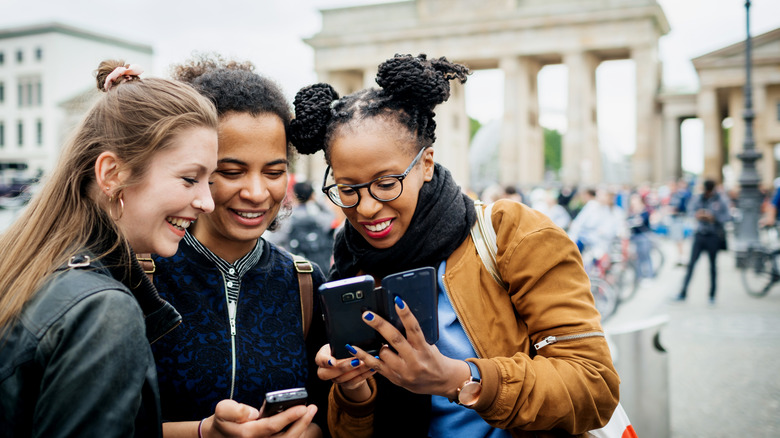The Easiest Way To Keep Your Phone Connected When Traveling To Other Countries
Whether you're sending vacation pictures to friends and family, looking up hiking routes, or using electronic navigation to get around, you're very likely using your phone while traveling to other countries. You may be someone who just signs up for their carrier's international phone and data plan for a few days while you're away, but that can add up really quickly. Many people choose to use a SIM card instead. While that used to entail getting a physical SIM card from places like airports, newsstands, or vending machines and putting it in your phone, these days, the easiest way to keep your phone connected is with an electronic SIM, or eSIM. These do the same thing as physical SIM cards, but they can be purchased before or during your vacation and activated whenever you choose — and you don't have to worry about losing it.
Even better: An eSIM allows you to use more than one phone number (including a local one) and switch to a less expensive local carrier in areas you're visiting, which can save you money. Electronic SIMs are also often prepaid, so you may be able to budget your usage better. If you have a newer device, it's likely compatible with an eSIM, but call your provider to double-check.
How to use an eSIM in your phone overseas
Using an eSIM can actually help protect your data if you use it to go online while traveling, rather than logging in to airport Wi-Fi or public Wi-Fi, which can compromise your online security. Before setting it up, make sure your phone isn't locked into one provider. If it is, you can call your provider to find out its terms to unlock it for you. (You'll have to do this before using an eSIM.) To activate it, you may be asked to download the eSIM company's app, go through its website, or scan a QR code. You'll likely have the option to choose between a global, regional, or country-specific plan. There will be instructions on how to activate the SIM and switch between providers and, if you like, phone numbers.
Before you decide how much data to get, you may want to look at how much you use in your everyday life. Then, consider how you plan to use your device on vacation. Video streaming can eat up a lot, for instance, but if you're just using data while you're away to check in with people at home or to double-check your restaurant reservations, you may not need much. However, you can always add data while you're away. You don't have to worry about taking a physical card in and out or losing it while traveling. If you decide to skip the eSIM and purchase a physical SIM card, make sure you read travel pro Rick Steves' advice first. Finally, once you're connected, make sure you don't post vacation photos while you're actually out of the country for your own safety.

